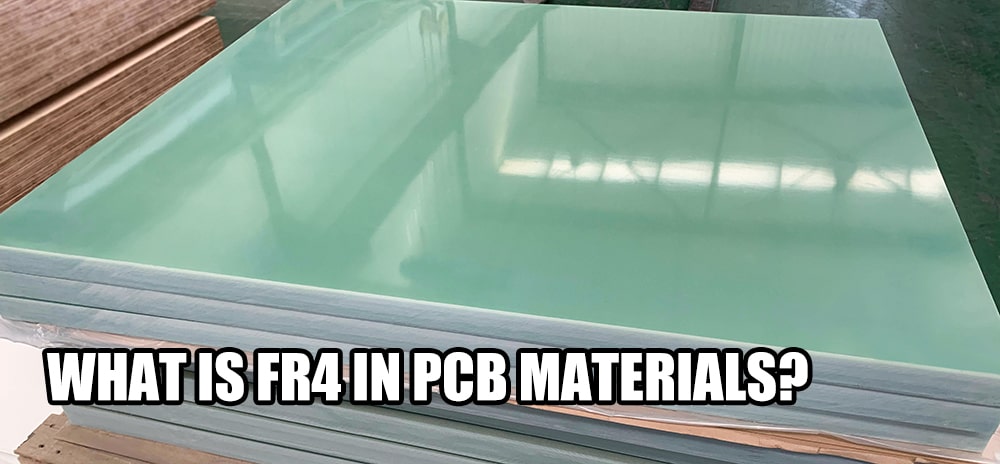What is FR4 in PCB materials?
21 January 2025
Views: 2863
FR4 is a common plate type in PCB manufacturing. It is a general name for laminates that use fiberglass cloth as reinforcement material and the resin system is epoxy resin.

FR-4 does not refer to a specific material, but a general term for a type of plate. The fiberglass cloth is electronic-grade glass fiber woven into a thin, cloth-like material. Fiberglass gives FR-4 the necessary structural stability. This fiberglass cloth is surrounded and bound by epoxy resin with flame retardant additives. According to different uses, it is divided into: FR-4 Epoxy Glass Cloth, insulation board, epoxy board, epoxy resin board, brominated epoxy resin board, FR-4, fiberglass board, fiberglass board, FR-4 supplement Strong board, FPC reinforced board, flexible circuit board reinforced board, FR-4 epoxy resin board, flame retardant insulating board, FR-4 laminated board, epoxy board, FR-4 light board, FR-4 fiberglass board , epoxy glass cloth board, epoxy glass cloth laminate, circuit board drilling pad, etc.
Features of FR-4: stable electrical insulation performance, good flatness, smooth surface, no pits, standard thickness tolerance, suitable for products with high performance electronic insulation requirements, such as FPC reinforcement boards, PCB drilling pads, fiberglass Meson, potentiometer carbon film printed glass fiber board, precision test board, equipment insulating stay partition, insulating pad, transformer insulating board, motor insulating parts, grinding gear, electronic switch insulating board, etc.
The specifications of FR-4 are formulated by NEMA (National Electrical Manufacturers Association), as shown in the figure below:
| Grade |
Resin |
Reinforcement materials |
flame retardant |
| FR-1 |
Phenolic aldehyde |
Fiber paper |
Yes, UL94 V-1 |
| FR-2 |
Phenolic aldehyde |
Fiber paper |
Yes, UL94 V-1 |
| FR-3 |
epoxy |
Fiber paper |
Yes, UL94 V-1 |
| FR-4 |
epoxy |
Glass cloth |
Yes, UL94 V-0 |
| FR-5 |
epoxy |
Glass cloth |
Yes, UL94 V-0 |
FR in the NEMA classification standard stands for Flame-Retardant or Fire-Resistant, which is the fire resistance level, so FR-grade boards are all flame-retardant boards, and the 4 in FR-4 distinguishes this material from other materials of the same grade. , 4 means that the resin is epoxy resin, the reinforcing material is fiberglass cloth, and the flame retardant grade is UL94 V-0. The flame retardant grade of FR-1, FR-2, and FR-3 is UL 94V-1, and the resins and reinforcing materials used are also different.
In the last century, paper-based phenolic copper-clad substrates, such as XPC and XXXPC, were mostly used, but they were non-flame-retardant materials. After fire accidents caused by circuit faults in the 1970s, flame-retardant substrates began to be used. The use of flame-retardant paper phenolic copper-clad substrates FR-1 and FR-2 is gradually increasing.
Although XPC and FR-1 are cheaper than epoxy fiberglass cloth substrate FR-4, they are not as good as FR-4 in terms of moisture absorption, heat resistance and mechanical strength. In the early days, FR-4 was more used in precision industrial products.
As more electronic products are designed to be smaller, lighter, and thinner, the use of FR-4 sheets is also increasing. PCBs with standard thicknesses of 1.6 mm to 0.8 mm have become widely used, and the mechanical strength and moisture resistance of paper substrates have become issues.
In addition, paper substrates are not suitable for the production of multi-layer boards, and with the development of equipment miniaturization, PCB wiring density is getting higher and higher, and the market share of multi-layer boards is also getting higher and higher. Therefore, despite the relatively high cost of FR-4 sheets, it is still the most common type of sheet.
With the continuous expansion of production capacity of materials such as epoxy resin and glass fiber cloth, the current standard FR-4 substrate is already a low-cost material that has excellent performance in balancing cost and performance. Therefore, FR-4 is now the most common and commonly used board in PCB manufacturing.
